As in the picture: an Indian photographer reproduced the canvases of the XIX century
Categories: Asia | Culture | Photo project | World
By Pictolic https://pictolic.com/article/as-in-the-picture-an-indian-photographer-reproduced-the-canvases-of-the-xix-century.htmlThe re—creation of paintings by artist Ravi Varma with live models is a project of Indian photographer Venket Rama, which became the basis for his calendar for 2020.
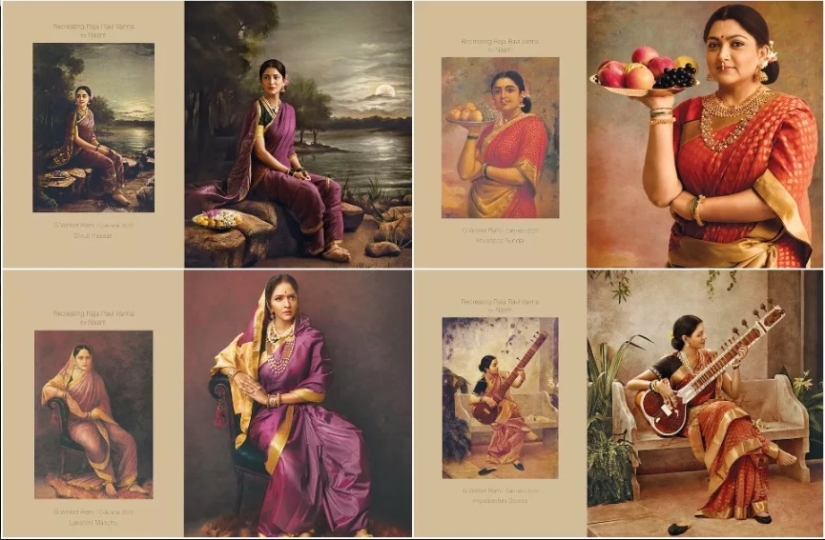
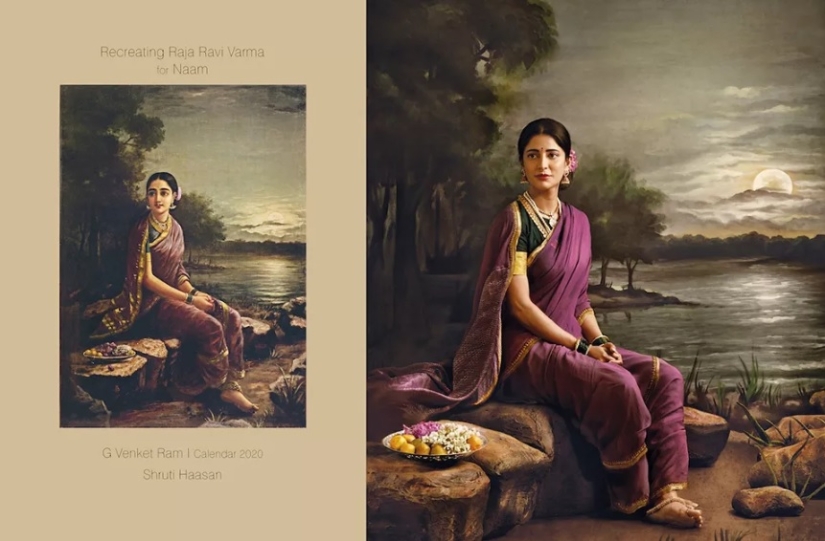
Shruti Hasan, who has achieved the greatest success in Telugu films, is also a singer and composer. In the picture, she is represented in the image of Radha, the beloved of the god Krishna
The artist Ravi Varma was born in 1848 in an aristocratic family of rulers of the principality of Travancore (now the territory of Kerala), and, although he never bore an official title, became known in Europe as Raja Ravi Varma, the prince-artist.
In his painting, he combined European academic technique with subjects of Indian mythology, wrote a lot on the themes of the Indian epics "Mahabharata" and "Ramayana", and also depicted the rulers of principalities and their wives.
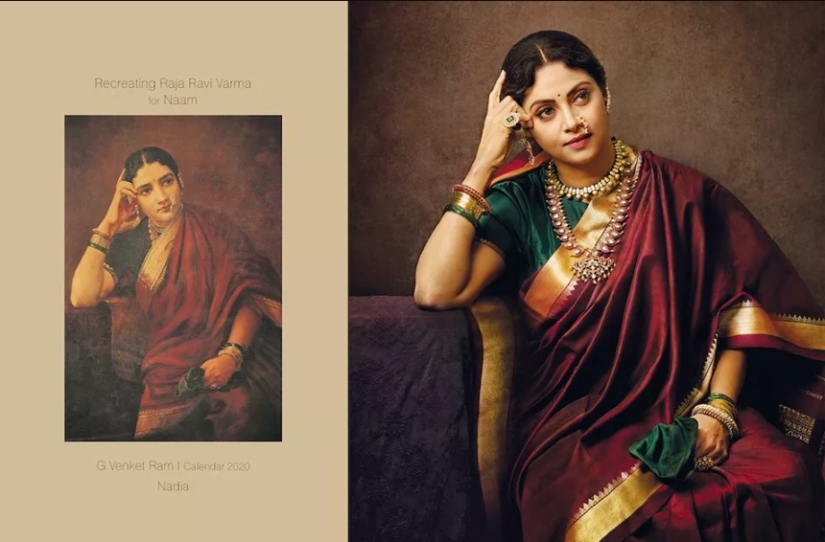
In the 1990s, when Zarina Moidu, known under the pseudonym Nadia, was at the peak of popularity, many young girls copied her style.
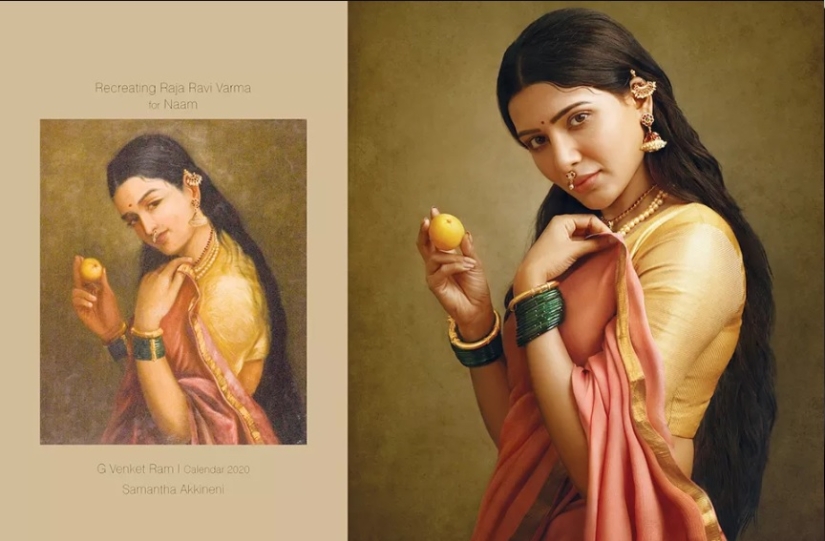
One of the highest-paid actresses of South India, as well as model Samantha Akkineni, was depicted by the photographer in the image of a future mother. The fruit in her hands symbolizes the nascent life
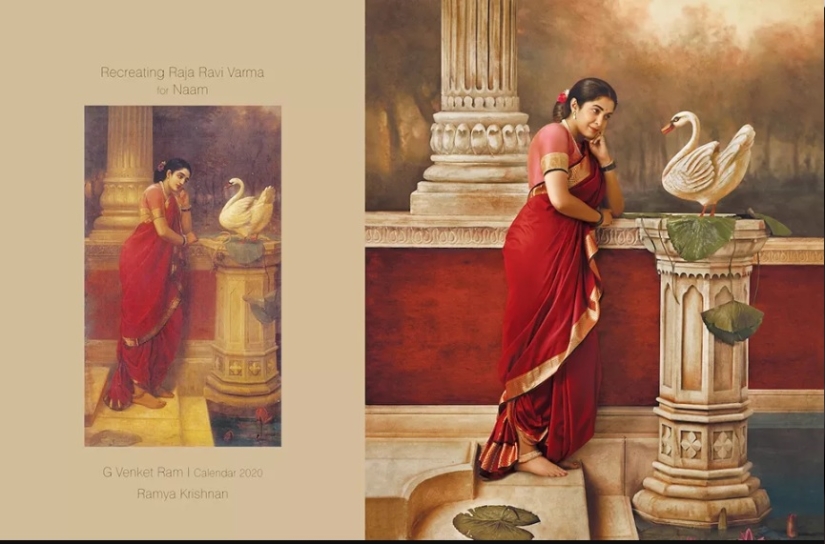
"Nal and Damayanti" is the story of the epic poem "Mahabharata", which shows different sides of Indian life for many centuries. Russian Russian poet Vasily Zhukovsky translated it into Russian. In the guise of Damayanti — Ramya Krishnan
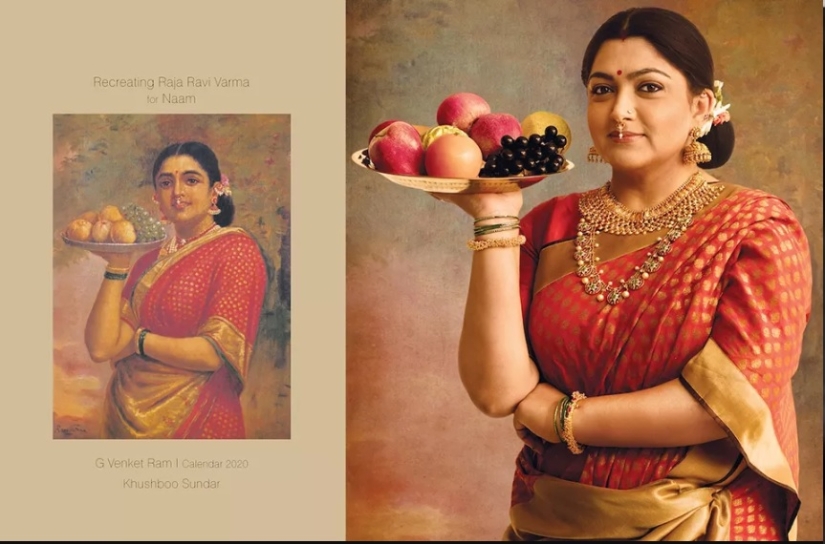
Kushboo Sundar portrays a woman of Maharashtra state. They usually wear a nauwari sari, which is just over 8 m long. Dressing in it, the fabric is as if threaded between the legs, which makes the movements more free. There is an explanation for such clothes: Maharashtra is a predominantly agricultural state, where men and women work almost equally.
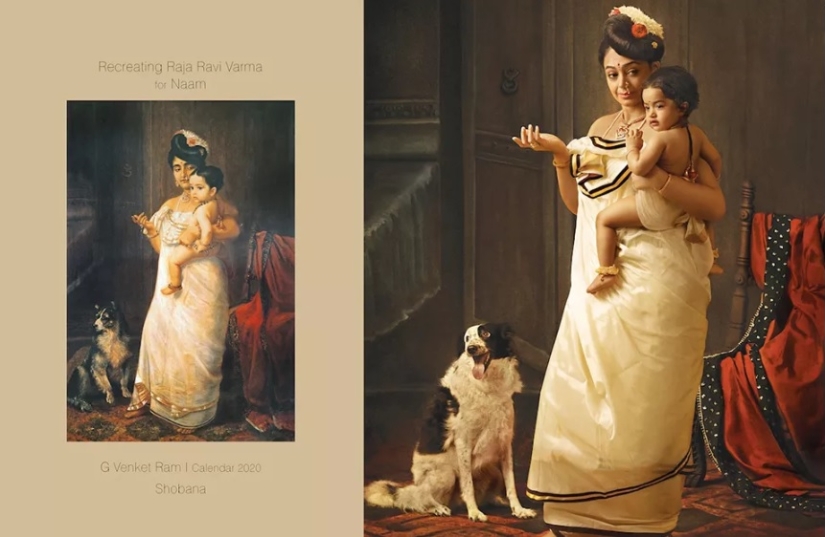
The artist has repeatedly depicted his daughters, and in this picture the photographer reproduced a portrait of one of them. The actress and dancer bharatanatyam Shobana became a living model.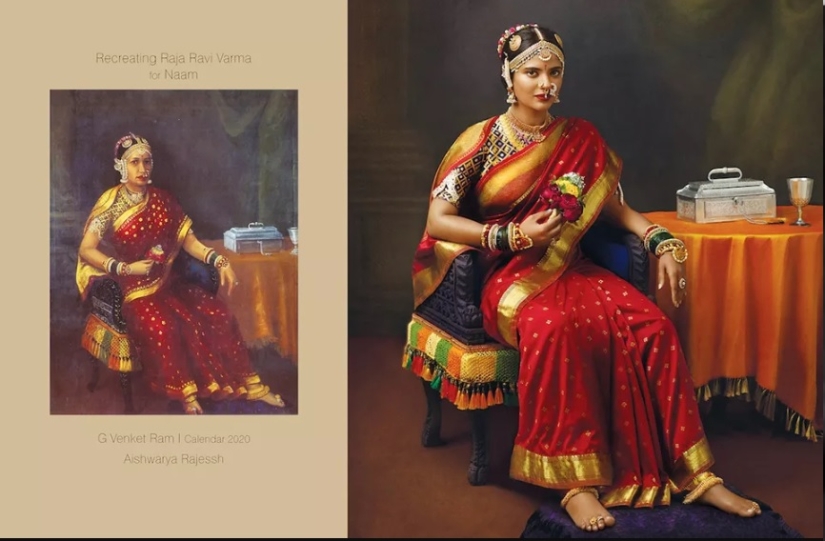
Aishwarya Rajesh in the guise of the wife of Ramachandra Tondaiman, ruler of the principality of Pudukkottai. Pay attention to the decorations. The traditional set includes 16 elements, each of which has its own meaning. But modern women wear them at the same time only on their wedding day.
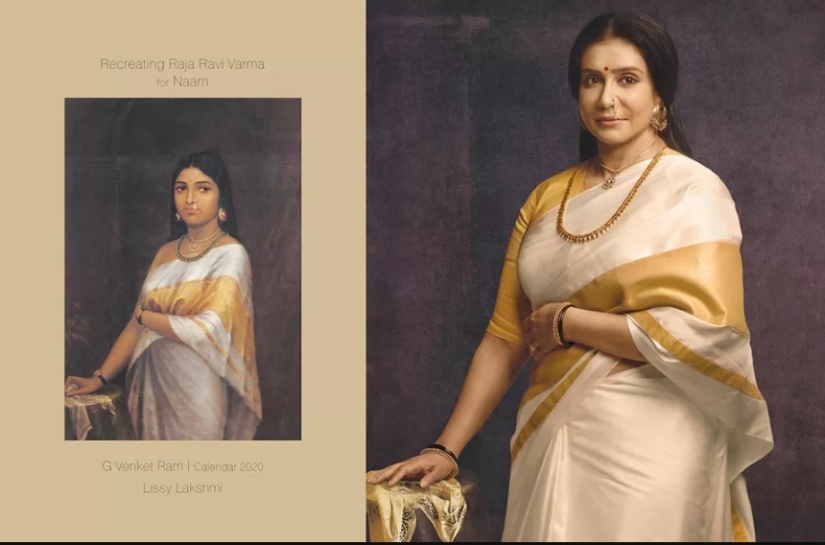
The traditional women's clothing of Kerala is mundum-neryathum, consisting of two pieces of cloth. In special cases, an outfit with a golden border and a blouse of the same color are worn. This is how royalty dressed in the XIX century, one of which was reproduced in the picture by former actress Lissi Lakshmi.
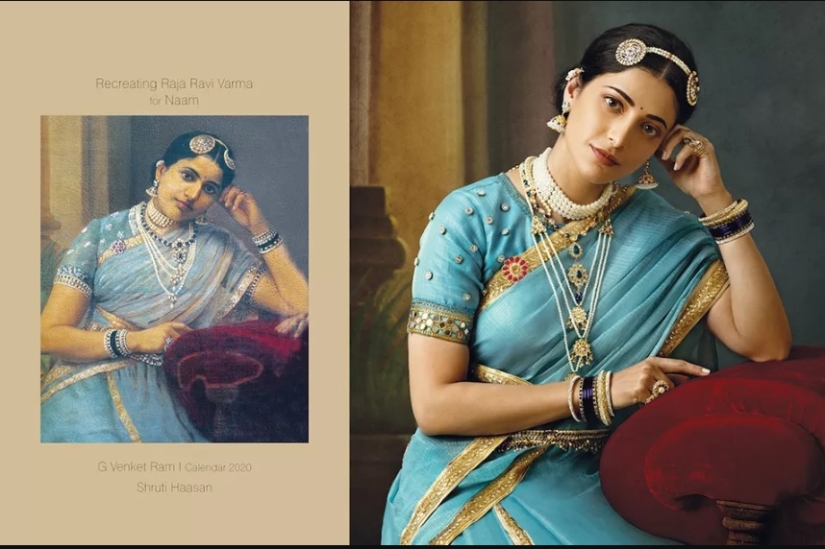
Shruti Hassan in the guise of the ruler of the principality of Kurupam, which is now part of the state of Andhra Pradesh
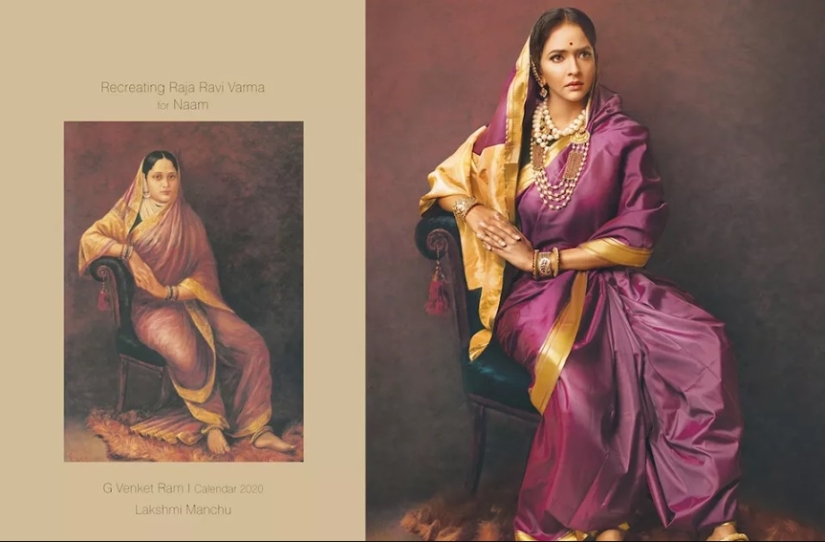
Lakshmi Manchu portrays the wife of Sayajirao Gaekwad III, in whose honor the Lakshmi Vilas Palace was built in the city of Thanjavur. In size, it exceeds Buckingham four times!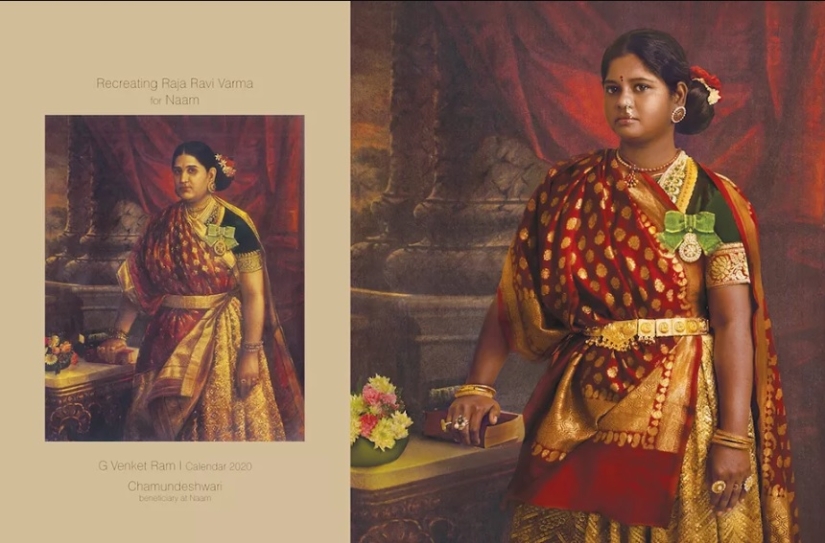
Chamundeshwari in the image of Lakshmi Bai, Princess of the Principality of Travancore, which became part of Kerala in 1956.
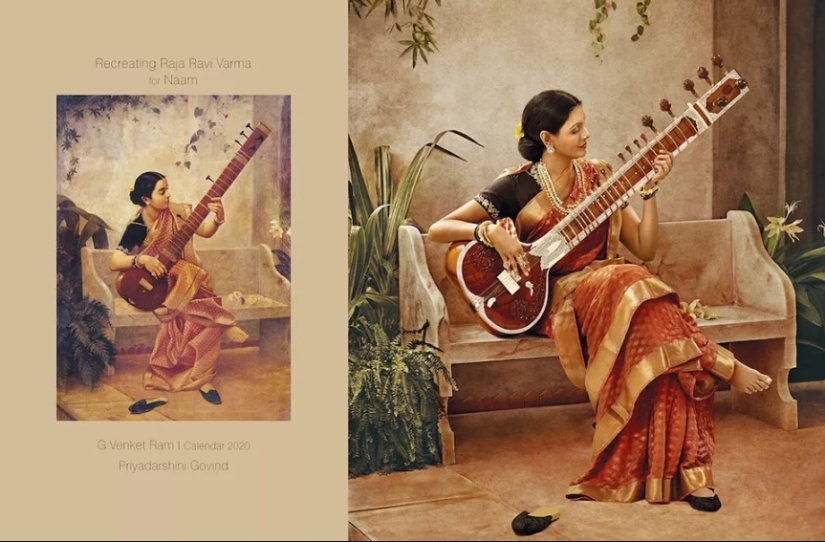
Priyadarshini Govin portrays an intelligent Bengali lady, whose status is emphasized by the rich embroidery on the fabric.
The proceeds from the sale of the calendar are used to raise funds for the empowerment of single women from underprivileged segments of society.
Keywords: XIX century | India | Calendar | Canvases
Post News ArticleRecent articles

Victor Lustig is considered one of the most skillful and famous scammers in the world. He was arrested about 50 times and released ...

A small apartment is not a sentence! On the contrary, this is an occasion to turn on imagination and come up with ways to stylishly ...
Related articles

What did the petty criminals of the XIX century look like? We offer you a look at the faces of English prisoners held in a penal ...

It's amazing, but there are still places on our planet where holiness is not an empty phrase, and in order to achieve it, people ...

In the color portraits of the 1870s, colored by the colorization expert Tom Marshall, children look at the lens too severely and ...

Each of us has heard at least once that "breakfast is the most important meal of the day." Spreading this truth is the work of ...